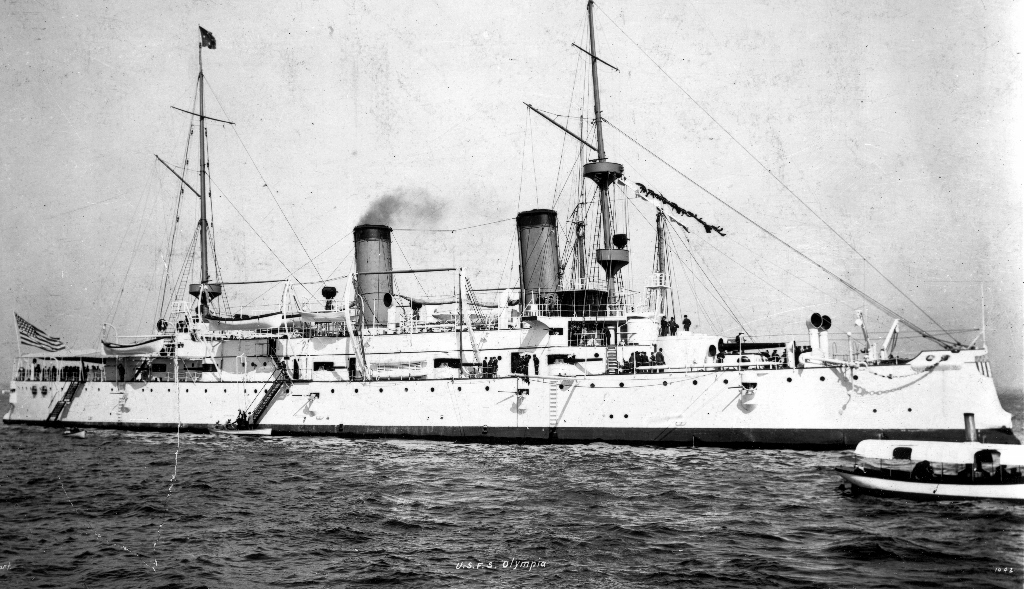
This was the first USN Rapid Fire (RF) gun and it was used mainly for battleship and cruiser secondaries. The Mark 2 guns were too lightly built, with USS Brooklyn (ACR-3) having two of her guns bulged at the muzzle following the Battle of Santiago in 1898. As a result, the follow on Mark 3 and Mark 4 were designed with a stronger muzzle bell. Many of these guns were later modified to use the Dashiell breech mechanism, a three-motion breech that could be controlled by a single lever.
Mark 2 was constructed of tube, jacket and two hoops. Mark 3 was nearly the same with some minor differences in the recoil cylinders and a larger muzzle bell. Mark 4 was similar to the Mark 3 but with a modified groove for the yoke.
One of the Mark 3 Mod 3 guns was cut down to 25 calibers and used to test anti-aircraft concepts at the proving grounds. This led to the later development of the successful 5"/25 (12.7 cm) Mark 10 AAA weapon.
| Designation | 5"/40 (12.7 cm) Marks 2, 3 and 4 |
|---|---|
| Ship Class Used On | Kearsarge (B-5), Brooklyn (ACR-3), Olympia (C-6), Cincinnati (C-7) and Montgomery (C-9) classes |
| Date Of Design | about 1890 |
| Date In Service | 1895 |
| Gun Weight | Without breech: 7,000 lbs. (2,903 kg)
With breech: 7,080 lbs. (3,211 kg) |
| Gun Length oa | N/A |
| Bore Length | 200 in (5.080 m) |
| Rifling Length | N/A |
| Grooves | N/A |
| Lands | N/A |
| Twist | Increasing RH 0 to 1 in 25 |
| Chamber Volume | N/A |
| Rate Of Fire | 12 rounds per minute |
| Type | Separate |
|---|---|
| Projectile Types and Weights | AP: 50 lbs. (22.7 kg) |
| Bursting Charge | N/A |
| Projectile Length | N/A |
| Propellant Charge | 10 lbs. (4.5 kg) SP or SPD |
| Muzzle Velocity | 2,300 fps (701 mps) |
| Working Pressure | 14 tons/in2 (2,200 kg/cm2) |
| Approximate Barrel Life | N/A |
| Ammunition stowage per gun | Kearsarge: 256 rounds
Cincinnati: 100 rounds Others: N/A |
| Designation | Single Mountings - Center-pivot
Marks 2, 3 and 4: 1 Single Mountings - Pedestal Mount
|
|---|---|
| Weight | Mark 2: 14,198 lbs. (6,440 kg)
Mark 3: 7,850 lbs. (3,561 kg) Marks 5, 6, 7 and 8: About 14,500 lbs. (6,577 kg) |
| Elevation | N/A |
| Elevation Rate | Manual operation, only |
| Train | Brooklyn casemates: arc of 137 degrees
Open mounts: about -150 / +150 degrees |
| Train Rate | Manual operation, only |
| Gun recoil | N/A |
- ^The center-pivot mountings were difficult to adjust and had considerable amounts of bronze in their construction. Many of these were replaced in the early 1900s with new pedestal mounts, which were of all-steel construction and far stronger. For example, in 1901 at Cavite, Philippines, twelve new 5"/40 (12.7 cm) guns and their pedestal mounts were installed on USS Brooklyn (ACR-3).
- ^Mark 5 had an improved recoil system and a telescopic gun sight. This mount put the elevating and training gear in the hands of the gun captain rather than with separate pointers.
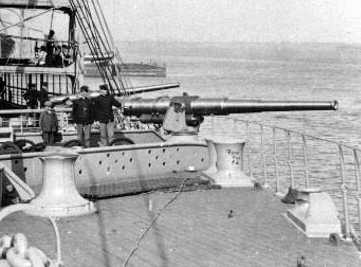
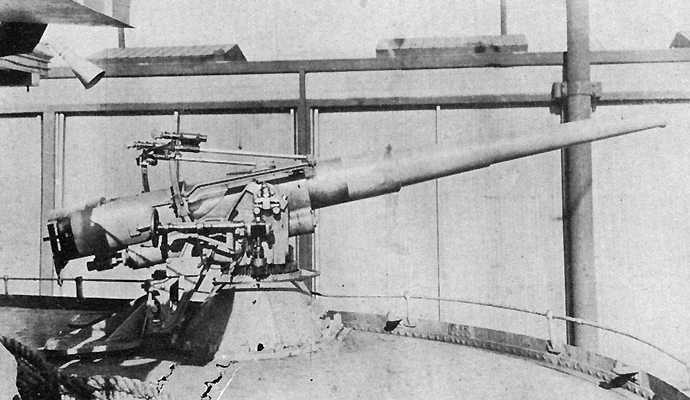
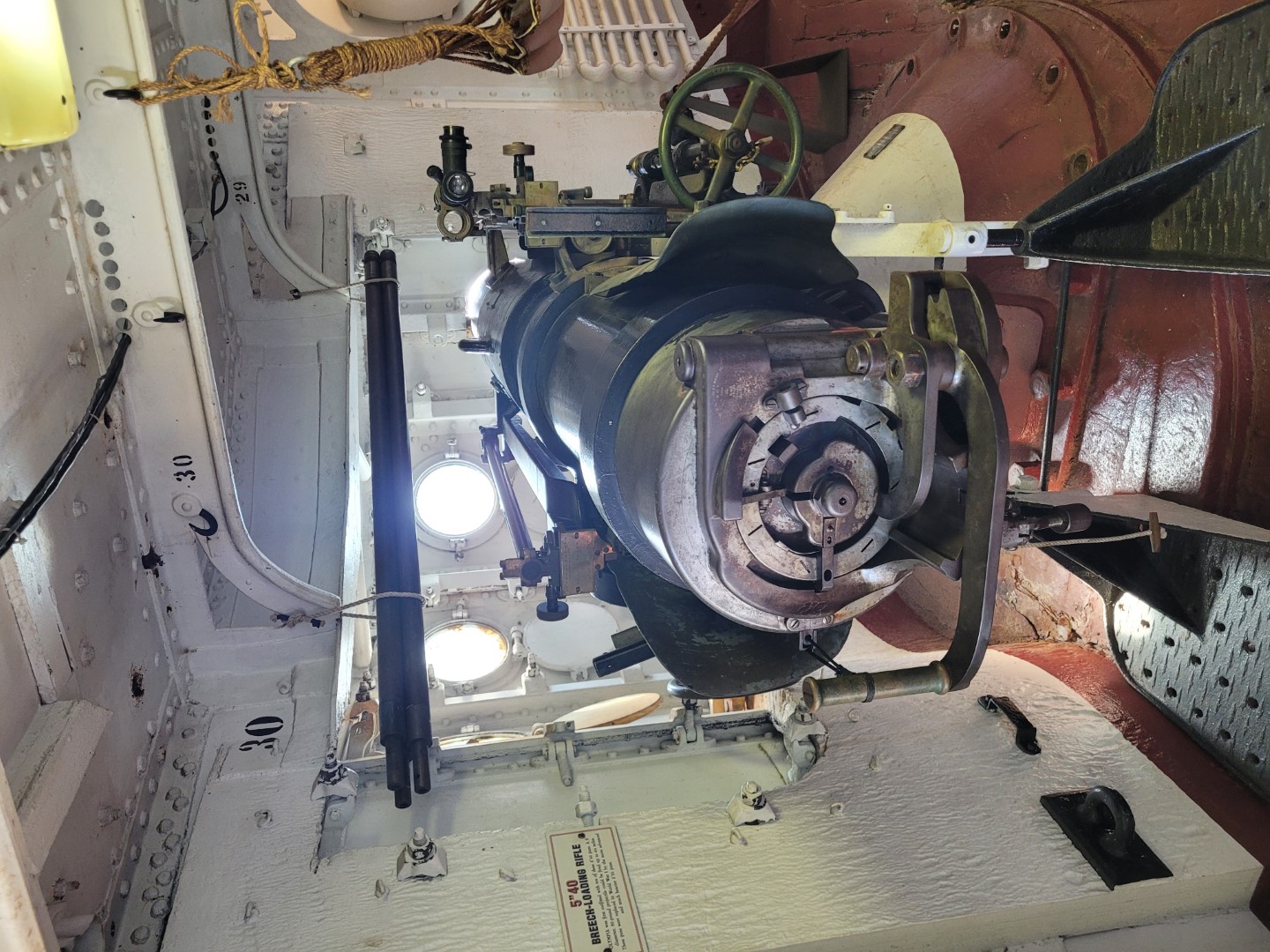
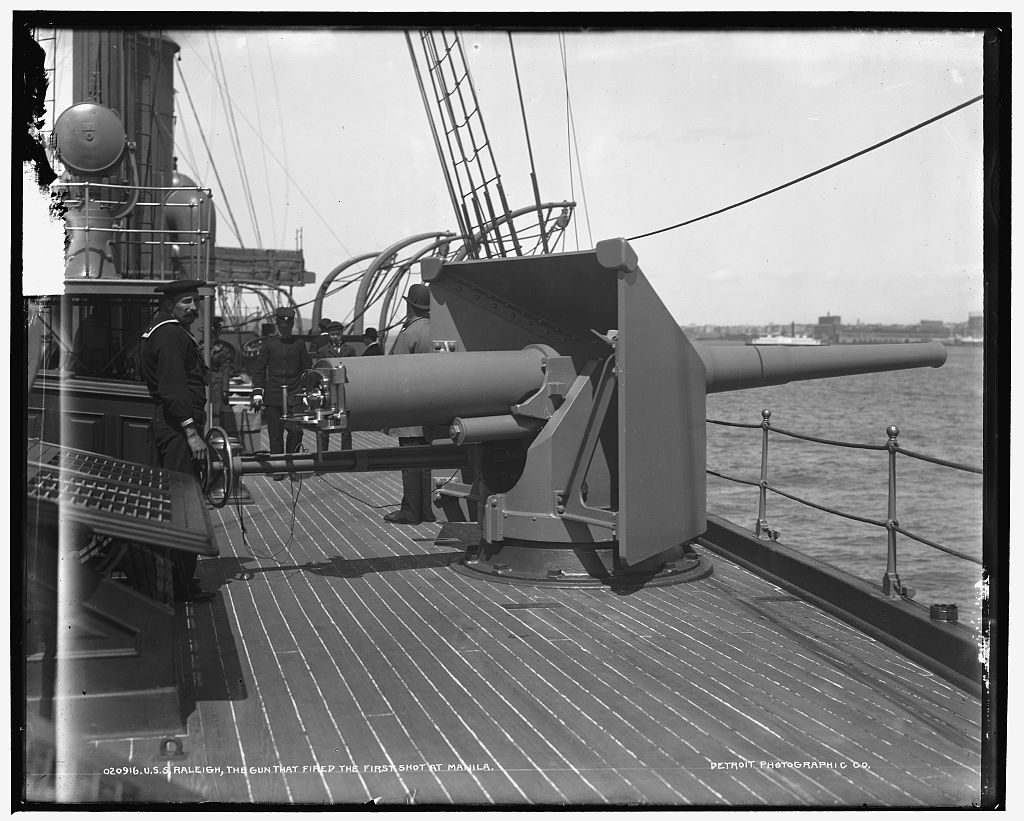
"U.S. Battleships: An Illustrated Design History," "US Cruisers: An Illustrated Design History" and "US Naval Weapons" all by Norman Friedman
"U.S. Armored Cruisers: A Design and Operational History" by Ivan Musicant
---
U.S. Supreme Court "Dashiell v. Grosvenor, 162 U.S. 425 (1896)" on-line at FindLaw
United States Naval Guns: Marks and Modifications: Service Guns - OP 127 (1916 edition) at Gene Slover's Navy Pages
12 February 2008 - Benchmark
14 February 2012 - Added constructional details and mounting Information, corrected photograph caption
10 May 2015 - Redid photograph of USSOlympia
12 March 2016 - Corrected typographical error
06 July 2022 - Converted to HTML 5 format
15 October 2024 - Added photograph of gun on USS Olympia
